Feeling overwhelmed by deadlines and to-do lists? Discover powerful time management strategies in this article and reclaim control of your day!
Table of Content:
- What is Time Management and Why you need it?
- Statistics
- Time Management Tips
- 8 Time Management Techniques For Every Professional
- Time Management Tools to Optimize your day
- Advantages of effective Time Management
- How Poor Time Management Impacts Your Work?
What is Time Management and Why you need it?
Effective time management is the cornerstone of productivity and goal achievement. It involves the meticulous planning and organization of tasks and the skillful prioritization of their importance.
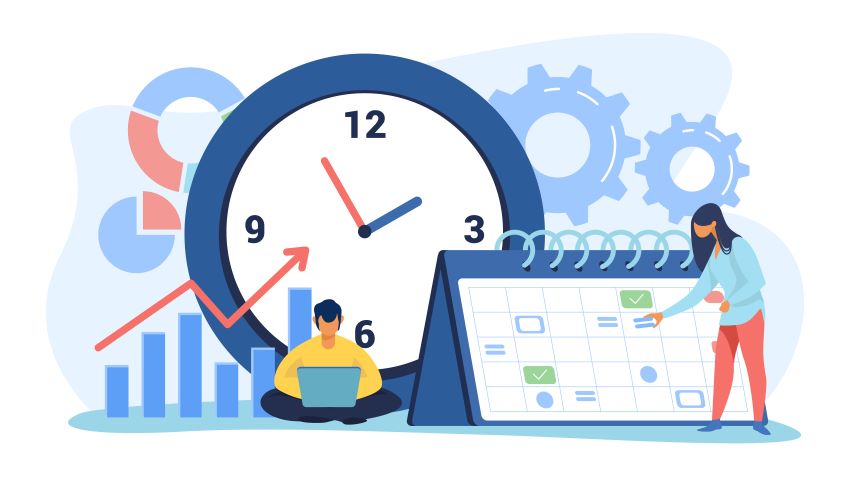
Research has shown that inadequate planning leads to procrastination and directly affects productivity. Conversely, implementing daily work plans helps individuals and organizations tackle tough tasks with focus and ease.
Mastering time management starts with identifying high-impact tasks and scheduling them effectively. This empowers organizations to achieve their objectives and employees to deliver consistently impactful work, reducing stress and boosting morale.
Deadlines can stress teams out, but planning and managing projects well calms things. Both managers and team members can use techniques to clear up who does what and how, making work flow smoothly and reducing stress.
All time management begins with planning.
Tom Greening
Statistics:
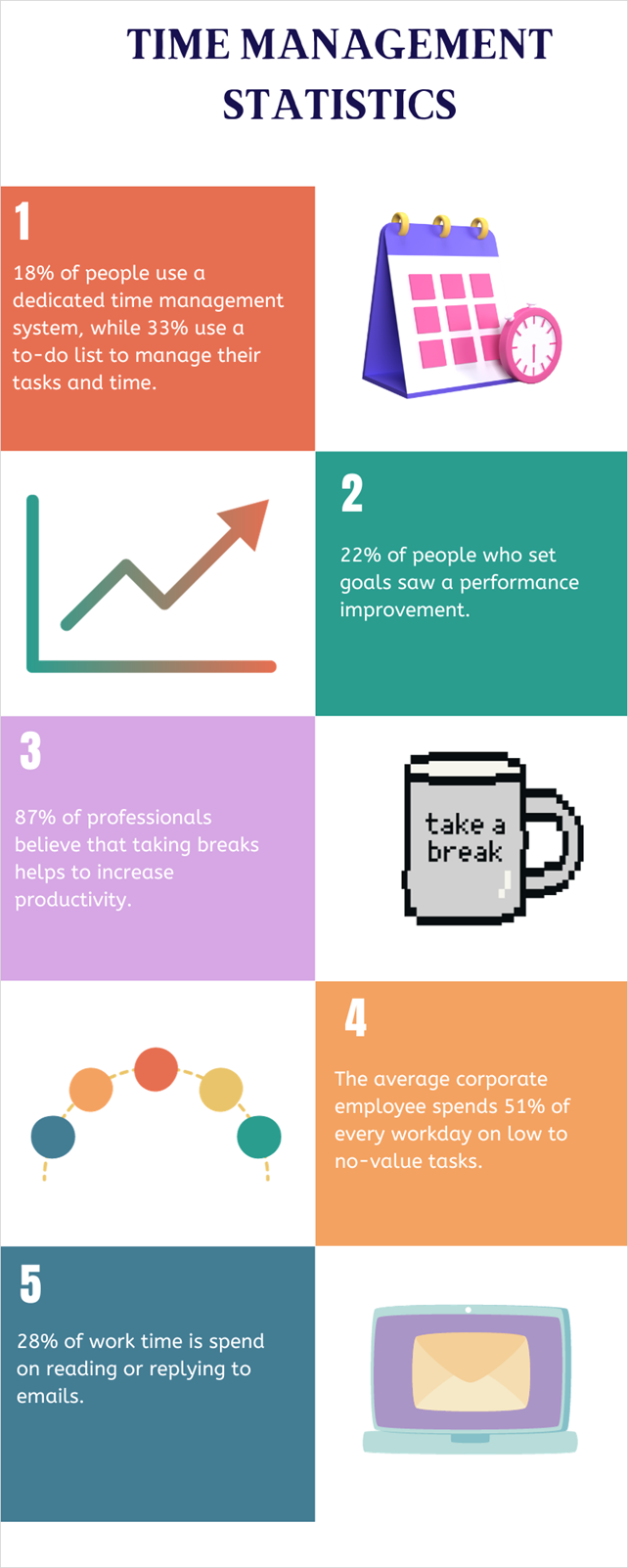
Boost Your Productivity with Time Management Tips:
Taking control of your time is key to success at all levels of an organization. By optimizing their approach to time, both managers and employees can achieve greater productivity, reduce stress, and ultimately achieve their goals. Here’s a roadmap to optimize time management for both parties:
For Managers:
1. Goal Setting and Prioritization:
- Define Objectives and Targets: Clearly establish organizational goals and individual team objectives. Set measurable targets for each objective, ensuring everyone understands what success looks like.
- Prioritization Framework: Implement a system for prioritizing projects based on urgency and importance.
2. Task Breakdown and Delegation:
- Project Decomposition: Break down large projects into smaller, actionable tasks. This makes them less daunting and easier to manage.
- Strategic Delegation: Assign tasks to team members based on their strengths and expertise. Effective delegation empowers team members and reduces your workload.
3. Scheduling and Time Tracking:
- Create Workflows: Develop clear timelines and deadlines for each task. Utilize project management tools to visualize workflows and track progress.
- Time Monitoring: Encourage employees to track time spent on each task. This data helps identify areas for improvement and optimize future project planning.
For Employees:
1. Daily Planning and Prioritization:
- Task Review: Begin each day by reviewing assigned tasks and any unfinished tasks from the previous day.
- Calendar Planning: Create a daily or weekly schedule using a calendar or planner. This helps visualize your workload and allocate time effectively.
- Prioritization: Analyze tasks and prioritize them based on urgency and importance. Tackle high-priority tasks first to ensure timely completion.
2. Focus and Time Management Techniques:
- Reminder Systems: Set reminders for each task to stay on track and avoid procrastination.
- Deadline Setting: Establish realistic deadlines for each task to maintain focus and motivation.
- Time Tracking Tools: Utilize time trackers or time management techniques to stay focused and understand your time allocation for different tasks.
- Distraction Blocking: Schedule dedicated work periods and “block out” distractions like social media, phone calls, and unnecessary breaks. Politely inform colleagues about your focus time and use website blockers to stay away from time-wasting websites.
3. Breaks and Reflection:
- Schedule Breaks: Regular breaks are essential for maintaining focus and preventing burnout. Allocate short breaks throughout the day to refresh your mind and return to tasks with renewed energy.
- Time Reflection: After completing tasks, reflect on the time spent. Identify areas for improvement and adjust your approach for future tasks.
8 Time Management Techniques For Every Professional:
1. Pomodoro Timer:
Feeling overwhelmed by long to-do lists? The Pomodoro Technique helps you with better focus.
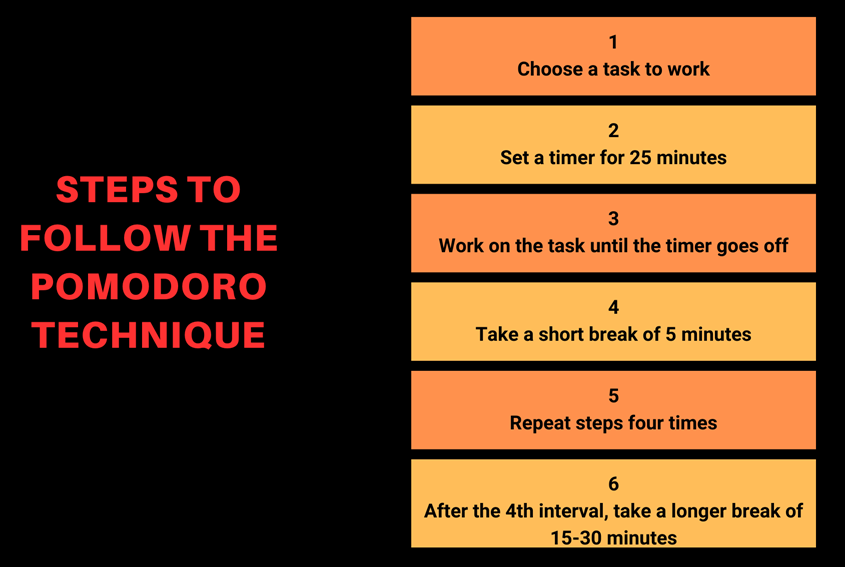
Benefits:
- Enhances focus and concentration
- Reduces procrastination and burnout
- Boosts productivity and reduces stress
2. Kanban Board:
Visualize your workflow and identify bottlenecks with Kanban boards. Each task is like a card and is moved through different phases as its status changes, representing the different stages of workflow.
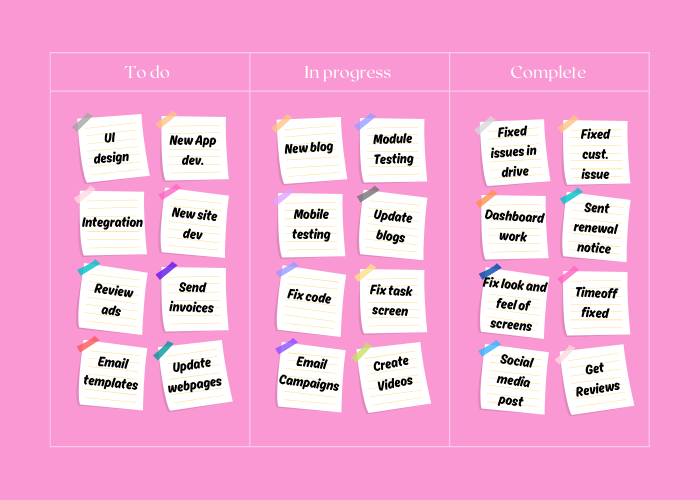
Benefits:
- See who’s working on what and where tasks stand
- Improve team collaboration and communication
- Identify areas for efficiency improvements
- Adapt easily to changing priorities
3. Eisenhower Matrix:
Struggling to prioritize? The Eisenhower Matrix helps you sort tasks based on urgency and importance.
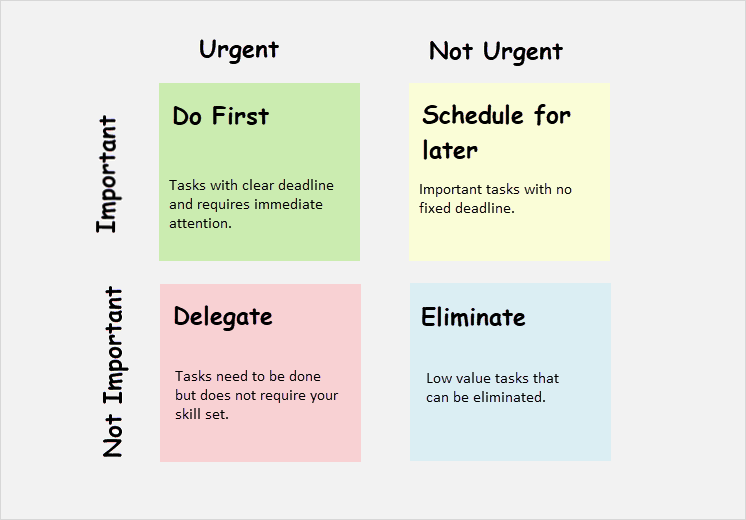
Benefits:
- Make clear decisions about what to tackle first
- Avoid wasting time on unimportant tasks
- Focus on high-impact activities
- Achieve your goals faster
4. Eat the Frog:
This technique was invented by Brian tracy and is inspired by Mark Twain’s quote:
If it’s your job to eat a frog, it’s best to do it first thing in the morning. And if it’s your job to eat two frogs, it’s best to eat the biggest one first.
This method is about priortizing your tasks and doing the most difficult, urgent, and important task first. Once you finish the hardest task all other tasks will be easy in comparison to this task.

Benefits:
- Conquer your toughest task while you’re fresh
- Build momentum and confidence
- Make other tasks seem easier in comparison
- Reduce procrastination and achieve more
5. Time Blocking:
Time Blocking is a method where you can simply divide your days in small blocks of time with tasks you need to do. Estimate the time for each task and add these time blocks in your Calendar.
Most of the successful people like Steve Jobs, Benjamin Franklin, Elon Musk, use time blocking to manage time.
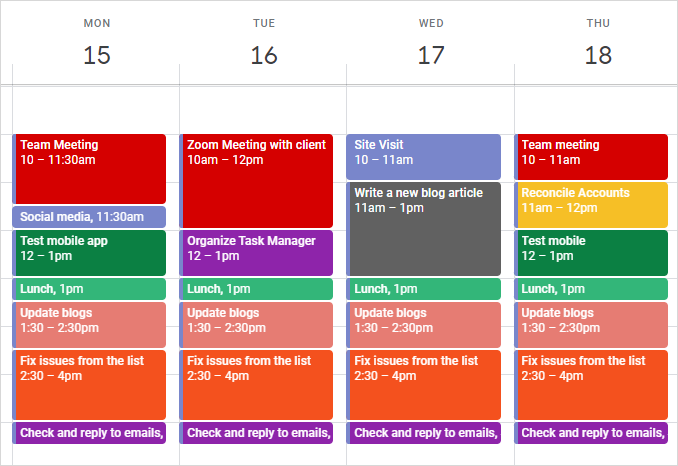
Benefits:
- Increase focus and avoid distractions
- Ensure dedicated time for important tasks
- Improve self-discipline and time management skills
- Become more productive with less effort
6. Pareto Analysis:
Pareto Analysis is the 80/20 rule where you need to identify the 20% of tasks that will give you 80% of your project outcomes. This will help in effective prioritization and help to achieve your goals with ease.
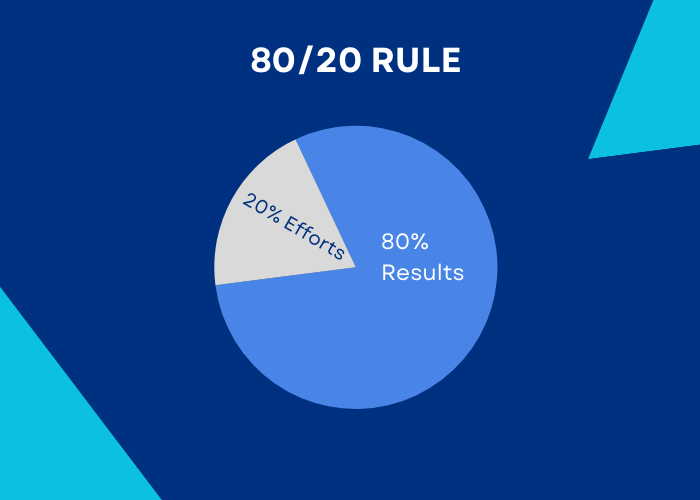
Benefits:
- Work smarter, not harder
- Achieve more with less effort
- Focus on activities that deliver the most value
7. SMART Technique:
The SMART goal-setting framework equips you to achieve what matters most. SMART transforms them into actionable steps that ignite your drive and propel you towards success.
S: Specific – Define specific goals with laser focus and avoid aimless wandering.
M: Measurable – Track progress with measurable metrics and see your efforts pay off.
A: Achievable goals – Stretch yourself without setting yourself up for failure.
R: Relevant – Choose goals that resonate with your values and propel you forward.
T: Time bound – Set deadlines to ignite action and stay on track.
Example of how you can use the smart technique in real life:
S: Goal – Run a 5K in 3 months to reduce weight.
M: Measure – Track your daily steps or workout sessions.
A: Achievable – Aim to lose 1-2 pounds per week instead of 10 pounds overnight.
R: Relevance – Connect your fitness goals to losing weight, improved health, and energy levels.
T: Tracking – Schedule your workouts and set weekly progress check-ins.
8. ALPEN Method:
The ALPEN method is a game-changer for anyone who wants to achieve their daily goals with focus and efficiency. You just need a pen, paper and focus to work on this.
A – Activities: Jot down all your tasks, big and small, personal and professional. Don’t worry about prioritizing yet, just get it all out on paper.
L – Length of time: Estimate how long each task will take. Be realistic, consider your past experiences and don’t forget to factor in potential interruptions.
P – Plan buffer time: Add a 20% buffer to each task for unexpected hiccups and social interactions. This ensures your schedule stays flexible and realistic.
E – Establish priorities: Analyze your list and assign priorities based on importance and urgency. Tackle the most crucial tasks first when your energy is high.
N – Note success: Review your completed tasks, analyze how your planning went, and identify areas for improvement. Did your priorities align with your goals? Which tasks need more focus or time? Learn from your experience and use it to plan a stellar tomorrow.
Time Management Tools to Optimize your day:
1. Time-Tracking Tool:
Ever wonder where your time disappears? Time tracking tools like OfficeClip will be valuable.
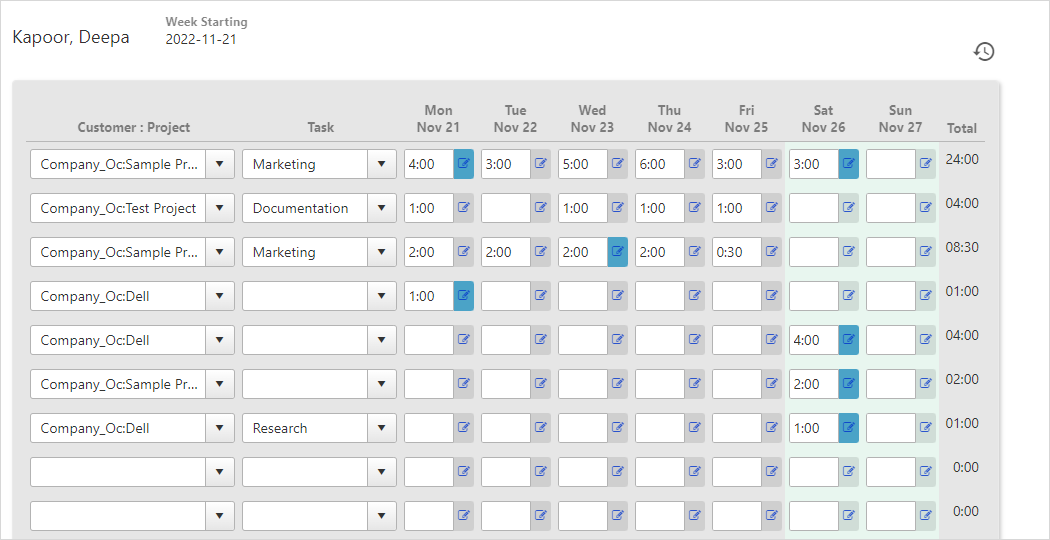
Benefits:
- See exactly how much time each task takes
- Identify time-consuming activities to optimize
- Improve planning, estimation, and budgeting
2. Task Manager
Ditch the spreadsheets and sticky notes! Task manager like OfficeClip will keep your tasks organized and accessible.
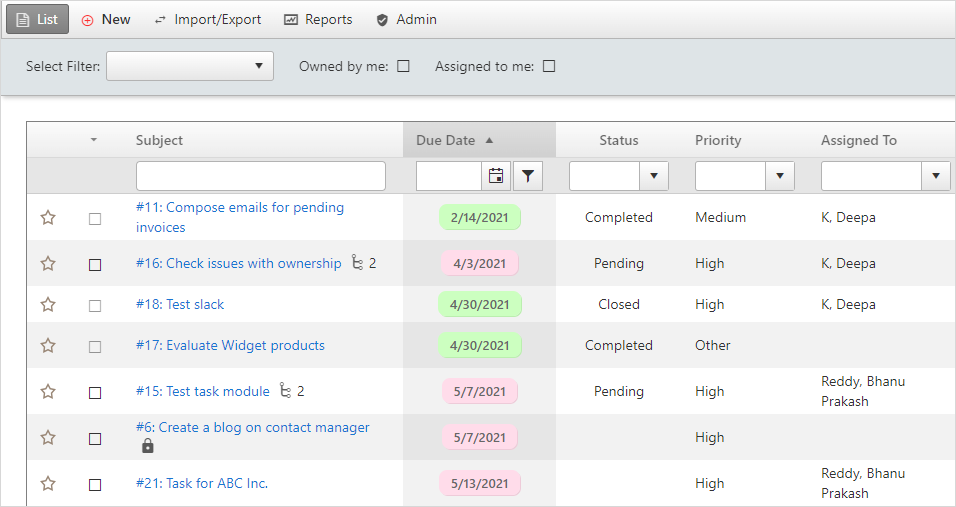
Features:
- Create to-do lists for projects
- Prioritize tasks and set deadlines
- Track progress and assign tasks
- Get a clear overview of your workload
3. Calendar
Keep track of your tasks and activities with OfficeClip Calendar.

Features:
- Get an overview of your schedule
- Color code events to help you distinguish between urgent and important task
- With deadlines in your calendar set you ensure you stay on the top and avoid proscratination
- Helps you plan your time strategically
4. Project Management
A Project management can help to improve time management and ensure that projects are completed on time, within budget, and to the desired quality. A project management like OfficeClip helps to:
- Create a detailed plan with clear tasks, resources and timeline for project
- Prioritize and allocate these tasks based on skills and experience
- Ensures clear communication and collaboration amongst teams
- Ensures issues are identified and addressed quickly
- It also involves monitoring the progress, timeline and budget of the project.
5. OneNote:
This powerful tool is for time management and can be used for:
- Organizing: Notes, tasks, deadlines, all in one place, organized by tags and sections.
- Planning & Tracking: Templates, calendars, time stamps, and progress charts keep you on top of things.
- Collaboration: Real-time sharing, notes, and feedback for seamless teamwork.
- Focus & Productivity: Distraction-free mode, ink to text, and mobile access keep you on track.
Advantages of effective time management:
Adopting the proper time management techniques with better planning and creating a work routine will help to:
- Strike the perfect work-life balance: Time management allows you to prioritize your well-being, ensuring a healthy and fulfilling life on and off the clock and ensure work-life balance.
- Conquer burnout: By strategically prioritizing and eliminating unnecessary tasks, you avoid getting overloaded with work and maintain your mental and emotional well-being.
- Reduce procrastination: Time management equips you with tools and strategies to tackle tasks head-on, fostering a sense of accomplishment and eliminating last-minute scrambles.
- Become a productivity powerhouse: Imagine accomplishing more in less time. Time management helps you focus on the most impactful tasks, eliminate distractions, and streamline your workflow.
- Transform goals into reality: Time management provides the framework and tools to break down ambitious goals into manageable steps and steadily propel yourself toward success.
- Manage stress confidently: Time management reduces the pressure of deadlines and gives you a sense of calm and control, knowing you have a plan and the skills to execute it.
- Elevate the quality of work: Time management isn’t just about speed; it’s about doing things right. With focused attention and organized workflow, you produce higher-quality work that reflects your true potential.
How Poor Time Management Impacts Your Work?
- Procrastination: Without a plan, you constantly put things off until the eleventh hour, leaving everything urgent and stressful.
- Low productivity: Without a clear roadmap, you’re lost in a sea of tasks, unsure of what matters most. This leads to low productivity and shoddy work. You end up rushing through tasks, sacrificing quality for speed.
- Missed deadlines: Time wasted is opportunity lost. Missed deadlines erode trust and damage your professional standing. You become unreliable, jeopardizing your reputation and career prospects.
By implementing these strategies, both managers and employees can become masters of their time. Remember, effective time management is a continuous process of learning and adapting. Experiment, find what works best for you and your team, and watch your productivity and success soar.
Image Courtesy:
Calendar vector created by katemangostar
References used:
